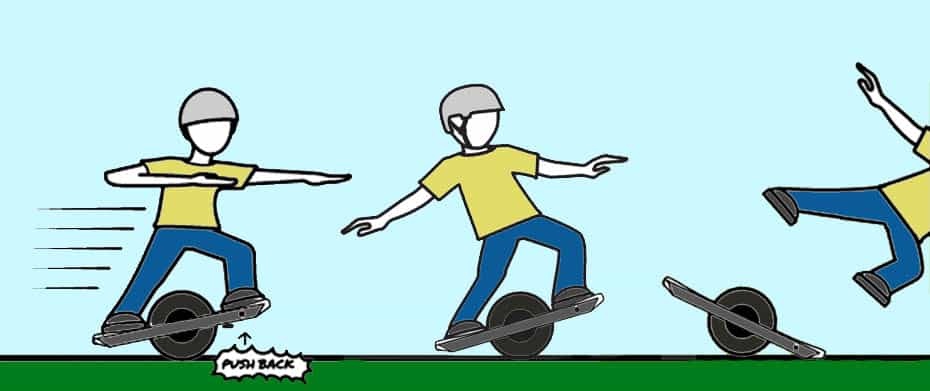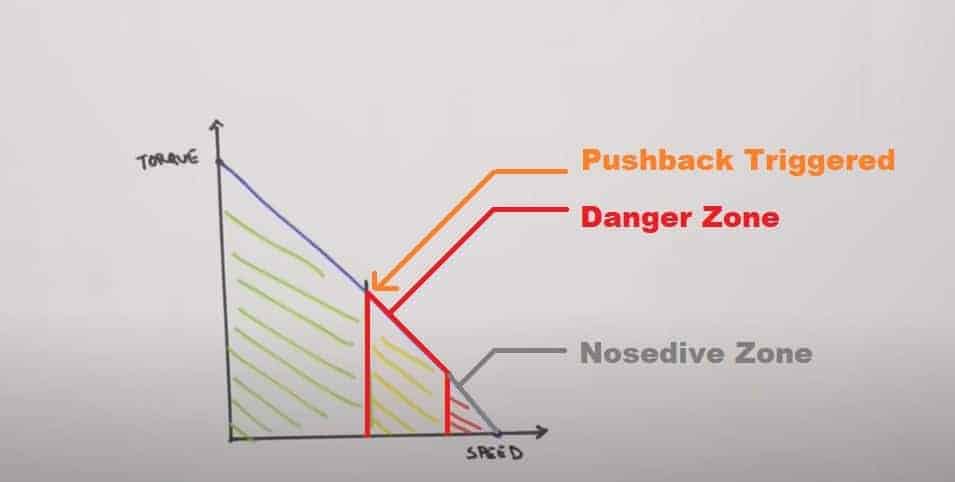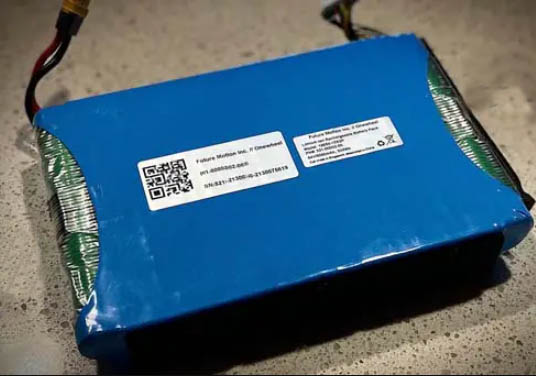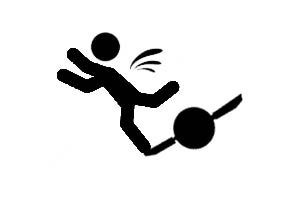
Pushback is the built-in safety mechanism that Onewheels are equipped with to indicate to the rider that they are reaching the limitations of their board. This is achieved by the Onewheel’s controller recalibrating the sense of ‘level,’ causing the nose of the Onewheel to become elevated and the rider to experience a leaning effect. Pushback can potentially result in a nosedive situation.
Think of it like a way a horse rider pulls on the reins to slow a horse down. The Onewheel is cueing you in to slow down. Lets discuss the different types of pushback there are, why they occur and riding beyond pushback.
Types of Pushback
The sensation of pushback may differ based on your digital shaping settings, and other factors like tire pressure, rider weight, battery level, and incline also play a role. The board initiates pushback not only when nearing speed limits but also if certain scenarios arise:
- Low battery
- Power limit
- Descending a hill / Fully charged battery pushback
- Speed limit

Pushback is set to trigger at about 50% of of the no-load speed of a Onewheel. No load speed is the max speed a Onewheel can rotate without any load on the board.
Pushback is a range. This is danger zone because you do get to a point where you can hit the nosedive zone.
Think of balancing a broomstick in your hand. This concept can illustrate how a Onewheel functions – an inverted pendulum. It actively responds to your shifts in weight to maintain balance. When the broomstick moves, your hand has to move with it. If it accelerates to fast, you will not be able to level the broomstick anymore. This is the same reason why the Onewheel gives pushback. It simply does not have any more power to give at a certain point.
Always remember: If the intensity of pushback increases, it’s important to immediately decelerate and come to a stop. Do not counteract pushback by leaning forward to accelerate. This will undoubtably end in a fall.
Low Battery Pushback
Since the Onewheel Pint, I have owned every subsequent Onewheel model. As your love for the sport increases you may find yourself like me in the insatiable desire for more range (a larger battery capacity). I bring this up not only because of range anxiety but also low battery pushback.
Low battery pushback typically does not occur until you are under 10% battery level however if you do not have a balanced battery, you could experience low battery pushback sooner than 10%. For this very reason, I try to avoid riding under a 30% battery level. If I do ride under this percentage, I do it with extreme caution. This brings us to the next type of Pushback – power limit.
Power Limit Pushback
Because rider weight, battery levels, PSI, terrain and model Onewheel all have a role in this, power limit pushbacks can vary. The Onewheel has a limited amount of power it can distribute to the wheel. While the Onewheel GT has 3 horsepower, this is on a fully charged battery. It is important to understand that the power of the board decreases as the duration of your ride increases. They are inversely related and for this very reason, this is why we have low battery pushback.
Low battery pushback is a power limit pushback that happens only when the battery is low however if you have low PSI, weigh near the max of the recommended Onewheel weight and are on soft terrain, you may experience a power limit push back in the middle of your ride.
Descending Hill Pushback
Onewheels have regenerative braking which gives you a little extra battery power when you brake or slow down. This is great way to get a little power-up when we go down a hill. That being said, the Onewheel cannot charge on steep hills. The regenerative power is too great and as a warning, the Onewheel will pushback. You may experience dragging-tail down a hill because of this pushback.

Not taking caution from pushback in this scenario can be extremely dangerous as you would encounter a nosedive downhill. With the GT, Future Motion now provides for a 90% charge limit. This is beneficial for two reasons. First, it helps lengthen the battery life by not overly stressing the battery and secondly, starting a ride downhill will avoid overcharging it.
If you descend too fast you will experience the pushback however if you charge the battery to 100%, the board will shut off in attempt to save the battery. Overcharging lithium-ion batteries leads to irreversible damage to cell components and may cause serious safety problems. This is the Onewheel’s protection mechanism to overcharging the battery. Reach this point and it is an instant nosedive.
Speed Limit Pushback
Speed limit pushback is the most common pushback riders experience. This is the pushback that sets in at the advertised max speed of the Onwheel. Now as stated above, pushback is triggered at about 50% of the no-load speed of the Onewheel. This does mean the Onewheel has room to continue to accelerate. This however is the danger zone. You should always wear a helmet especially if you are testing the limits of your Onewheel.

Many experienced riders can feel speed pushback kick it and learn to ride the limit to keep a competitive speed. This practice takes experience and time to ‘feel’. Nosediving at higher speeds is very dangerous.
Digital Shaping Speed Limits
While speed limit pushback is supposed to set in at the advertised max speeds, there are a handful of digital shaping profiles that have a lower top speed. Within these profiles, pushback sets in sooner and it important to be aware of it so that you do not attempt to exceed it expecting to reach the boards max potential.
| Digital Shaping Mode | Max Speed |
|---|---|
| Pacific (Pint) | 12 mph [19 km/h] |
| Redwood (Pint X) | 12 mph [19 km/h] |
| Sequoia (XR) | 12 mph [19 km/h] |
| Cruz (XR) | 12 mph [19 km/h] |
| Bay (GT) | 12 mph [19 km/h] |
| Roam (GT) | 16 mph [26 km/h] |
Riding and Exceeding Pushback – Tips and Tricks
Riding pushback can be awkward because the nose is always up. For this reason, aftermarket rails such as Lightning Rails and Homebrew WTF’s make riding pushback more comfortable. These rails will feel a little dipped in the nose until you hit pushback. When you reach pushback, the board will level out again. Again, it takes experience to ride beyond pushback. Aftermarket rails make it all the easier (which can be a danger to an extent).
Riding through pushback is far easier with a fully inflated tire (20 PSI or higher) and on level (preferably harder) terrain. If you are considering increasing your Onewheel speeds, you should get some recommended protective gear before attempting any of this. Crash pads, wrist guards, kneepads and of course a helmet. These can preserve them bones of yours.
